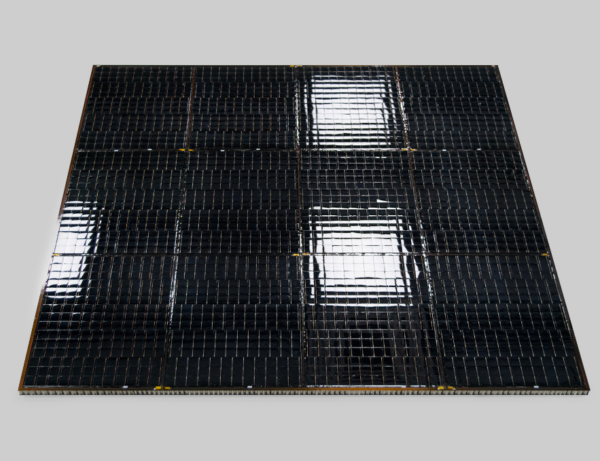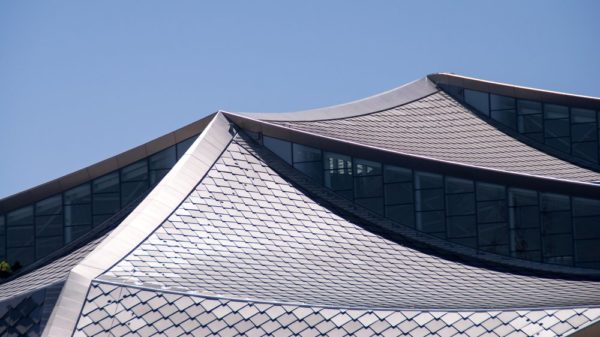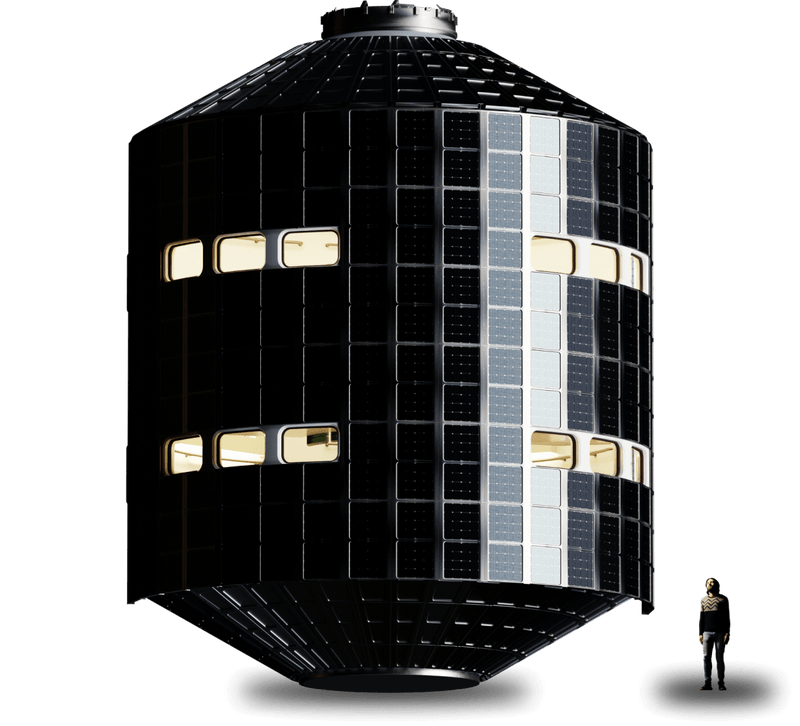Albuquerque, New Mexico-based mPower Technology announced its DragonSCALE solar power system has been chosen by Gravitics to power its space station units.
Gravitics is currently developing StarMax, a flexible-use space station module that provides up to 400 cubic meters of habitable space. The units are designed to retool the manufacturing processes with updated techniques and design goals based on the next generation of space launch vehicles. Gravitics said the design has achieved the highest safety factor of any human-rated spacecraft.
The dragon scale-like solar modules are a flexible, interconnected mesh of silicon cells. The cells were chosen for their high efficiency and ability to wrap around the cylindrical space station. mPower said the solar cells are lightweight, low-cost, and resistant to orbital debris damage.

The solar cells are made of silicon, bucking the trend of gallium arsenide (GaAs) as a top choice for space solar applications. mPower said GaAs cells are extremely expensive and supply constrained, and emerging silicon-based alternatives are unproven, untested, and not yet ready to scale.
Its DragonSCALE solar modules use more traditional silicon materials similar to those used in the residential solar space, which the company said leads to low cost, high packing factors, radiation recovery, damage resilience, low weight and stowage volumes, mechanical flexibility and ease of system integration.
mPower said its current manufacturing capacity is 50 kW per year and is currently being expanded to 200 kW per year. Its production facility is 100% automated and leverages silicon terrestrial PV cells and microelectronics assembly processes and materials. For large-scale deployments, the company said it can scale up to 1.5 MW per year per line, expand to hundreds of MW per year with relatively small manufacturing investments.
Double dragon
The mPower DragonSCALE is not the only dragon-inspired solar technology that has found a partnership. European solar panel provider Sunstyle installed a building-integrated photovoltaics (BIPV) array for Google on its Silicon Valley campus.
The internet giant, which also is a world-leading clean energy procurement company, has installed around 7 MW of the product on two buildings at its Silicon Valley campus. The 90,000 individual solar panels will generate enough electricity to cover around 40% of the electricity used in the buildings, known as Bay View and Charleston East.

The solar cells are embedded into a sturdy, but flexible, polyvinyl acetate (PVAc) layer. Six millimeters of hardened solar glass protects the face of the panels; the back is protected by a layer of fire resistant Tedlar (polyvinyl fluoride). Because the edges of the tiles are sealed to keep out moisture — much like a glass-glass solar panel — aluminum framing on the panel is not necessary.
The polyvinyl layer is a highly textured “prismatic” surface, which traps photons within the solar panel that would normally escape from traditional flat solar panels. The result is an increase in the solar panel’s generation.
One panel installed alone sports an efficiency of 15%. That is because the standard shingle doesn’t have a solar cell in the top square due to the product’s overlapping nature. But when one takes into account the overlapping configuration, the effective efficiency rating is closer to 17%, which is what the company lists on its website.
The warranty covers the product’s ability to generate electricity as well as its integrity as a building material. The shingles are guaranteed to last 30 years. Energy output is guaranteed to remain above 90% of its rated efficiency after 10 years, and above 80% after 25 years.
This content is protected by copyright and may not be reused. If you want to cooperate with us and would like to reuse some of our content, please contact: editors@pv-magazine.com.









By submitting this form you agree to pv magazine using your data for the purposes of publishing your comment.
Your personal data will only be disclosed or otherwise transmitted to third parties for the purposes of spam filtering or if this is necessary for technical maintenance of the website. Any other transfer to third parties will not take place unless this is justified on the basis of applicable data protection regulations or if pv magazine is legally obliged to do so.
You may revoke this consent at any time with effect for the future, in which case your personal data will be deleted immediately. Otherwise, your data will be deleted if pv magazine has processed your request or the purpose of data storage is fulfilled.
Further information on data privacy can be found in our Data Protection Policy.